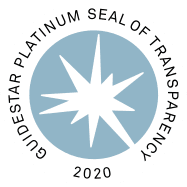Ask a typical American how the United States got into World War II, and they will almost certainly tell you that the Japanese attacked Pearl Harbor and the Americans fought back. Ask them why the Japanese attacked Pearl Harbor, and they will probably need some time to gather their thoughts.
They might say it was just that the Japanese were aggressive militarists who wanted to take over the world, or at least the Asia-Pacific part of it. Ask them what the United States did to provoke the Japanese, and they will probably say that the Americans did nothing. Clearly we were just minding our own business when the crazy Japanese mounted an unjustifiable sneak attack on us, catching us totally by surprise in Hawaii on December 7, 1941.
But you can’t blame this kind of thinking. For decades, such beliefs have constituted the generally accepted view among Americans, the one taught in schools and depicted in movies — what “every schoolboy knows.” Unfortunately, this orthodox view is not the whole picture.
Don’t bother to ask the typical American what U.S. economic warfare had to do with provoking the Japanese to attack Pearl Harbor, because they won’t know. It’s simply not common knowledge. However, it is essential knowledge.
Imperial Japan needed foreign resources to survive
In the late nineteenth century, Japan’s economy began to grow and industrialize rapidly. Because Japan has few natural resources, many of the burgeoning industries had to rely on imported raw materials, such as coal, iron ore or steel scrap, tin, copper, bauxite, rubber, and petroleum.
Without access to such imports, many of which came from the United States or from European colonies in southeast Asia, Japan’s industrial economy would have ground to a halt. By engaging in international trade, however, the Japanese had built a moderately advanced industrial economy by 1941.
At the same time, they also built a military-industrial complex to support an increasingly powerful army and navy. These armed forces allowed Japan to project its power into various places in the Pacific and East Asia, including Korea and northern China. This was very similar to how the U.S. used its growing industrial might to equip armed forces that projected U.S. power into the Caribbean and Latin America, and even as far away as the Philippine Islands.
American politicians didn’t like the Japanese before World War II
When Franklin D. Roosevelt became president in 1933, the U.S. government fell under the control of a man who disliked the Japanese, and harbored a romantic affection for the Chinese. This may be related to how, as some writers have speculated, Roosevelt’s ancestors had made money in the China trade.
Roosevelt also disliked the Germans (and of course Adolf Hitler), and he tended to favor the British in his personal relations and in world affairs. He did not pay much attention to foreign policy, however, until his New Deal began to peter out in 1937. Afterward, he relied heavily on foreign policy to fulfill his political ambitions, including his desire for re-election to an unprecedented third term.
When Germany began to rearm and to seek Lebensraum (colonialism) aggressively in the late 1930s, the Roosevelt administration cooperated closely with the British and the French in measures to oppose German expansion. After World War II commenced in 1939, this U.S. assistance grew ever greater, and included measures such as the so-called “destroyer deal” (sending warships for land rights), and the deceptively named Lend-Lease program (military aid).
In anticipation of U.S. entry into the war, British and U.S. military staff secretly formulated plans for joint operations. U.S. forces sought to create a war-justifying incident by cooperating with the British navy in attacks on German U-boats in the north Atlantic; Hitler refused to take the bait, thus denying Roosevelt the pretext he craved for making the United States a fully-fledged, declared belligerent — an end that the great majority of Americans opposed.
In June 1940, Henry L. Stimson, who had been secretary of war under Taft and secretary of state under Hoover, became secretary of war again. Stimson was a lion of the Anglophile, northeastern upper crust and no friend of the Japanese. In support of the so-called Open Door Policy for China, Stimson favored the use of economic sanctions to obstruct Japan’s advance in Asia.
America squeezed Japan by blocking its trade
Treasury Secretary Henry Morgenthau and Interior Secretary Harold Ickes vigorously endorsed this policy. Roosevelt hoped that such sanctions would goad the Japanese into making a rash mistake by launching a war against the United States, which would bring in Japan’s ally Germany.
Accordingly, the Roosevelt administration, while curtly dismissing Japanese diplomatic attempts to harmonize relations, imposed a series of increasingly stringent economic sanctions on Japan. In 1939 the United States terminated the 1911 commercial treaty with Japan.
George Morgenstern, in the book Perpetual War for Perpetual Peace, noted Americas’ actions: “On July 2, 1940, Roosevelt signed the Export Control Act, authorizing the President to license or prohibit the export of essential defense materials.” Under this authority, “[o]n July 31, exports of aviation motor fuels and lubricants and No. 1 heavy melting iron and steel scrap were restricted.”
Next, in a move aimed at Japan, Roosevelt slapped an embargo, effective October 16, “on all exports of scrap iron and steel to destinations other than Britain and the nations of the Western Hemisphere.”
Finally, economic warfare escalated on July 26, 1941, when Roosevelt “froze Japanese assets in the United States, thus bringing commercial relations between the nations to an effective end. One week later Roosevelt embargoed the export of such grades of oil as still were in commercial flow to Japan.” The British and the Dutch followed suit, and embargoed exports to Japan from their colonies in southeast Asia.
Economic warfare put Japan in an untenable position
Roosevelt and his subordinates knew that, through economic warfare, they were putting Japan in an untenable position and that the Japanese government might well try to escape the stranglehold by going to war. Having broken the Japanese diplomatic code, the Americans knew, among many other things, what Foreign Minister Teijiro Toyoda had communicated to Ambassador Kichisaburo Nomura on July 31:
“Commercial and economic relations between Japan and third countries, led by England and the United States, are gradually becoming so horribly strained that we cannot endure it much longer. Consequently, our Empire, to save its very life, must take measures to secure the raw materials of the South Seas.”
Because American cryptographers had also broken the Japanese naval code, the leaders in Washington knew as well that Japan’s “measures” would include an attack on Pearl Harbor. Yet, they withheld this critical information from the commanders in Hawaii, who might have headed off the attack or prepared themselves to defend against it.
Politicians sought a crisis to unite people
That Roosevelt and his chieftains did not sound the alarm makes perfect sense: after all, the impending attack constituted precisely what they had been seeking for a long time. As Stimson confided to his diary after a meeting of the war cabinet on November 25, “The question was how we should maneuver them [the Japanese] into firing the first shot without allowing too much danger to ourselves.”
Tellingly, after the attack on Pearl Harbor, Stimson confessed that “my first feeling was of relief…that a crisis had come in a way which would unite all our people.”
To read more about the costs of war, be sure to check out our cluster page by clicking on the button below.
This article was previously published on the Learn Liberty blog.
This piece solely expresses the opinion of the author and not necessarily the organization as a whole. Students For Liberty is committed to facilitating a broad dialogue for liberty, representing a variety of opinions. If you’re a student interested in presenting your perspective on this blog, send your piece to [email protected], and mention SFL Blog in the email subject line for your chance to be published and be seen!

















